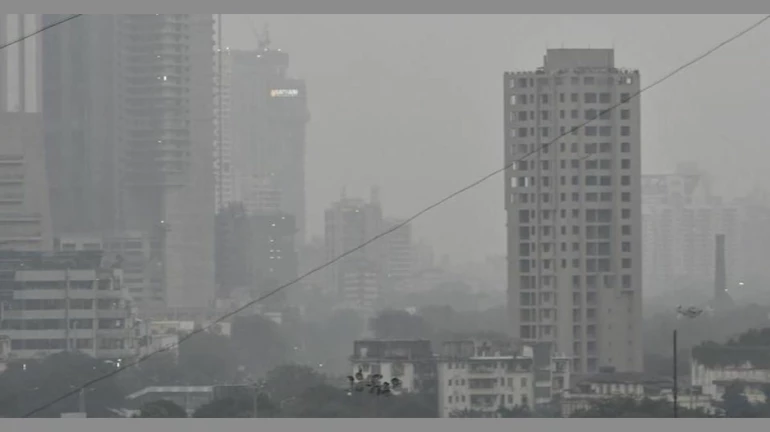
A new study has found that areas like Andheri, Bhandup, Ghatkopar, Kurla, Mulund, Kandivli, Vile Parle, and Vikhroli may be more vulnerable to COVID-19 due to the high and prolonged exposure to air pollutants. The study was conducted by the International Institute of Population Sciences (IIPS).
Civic wards like S, T, N, R-South, and K-East have a high concentration of sulphur dioxide (SO2) and nitrogen dioxide (NO2) in addition to particulate matter (PM10). The study states that the high levels of SO2 and NO2 could have contributed to the COVID situation in those wards.
Also read - BMC And Government-Run Vaccination Centres To Be Shut In Mumbai On Wednesday
Meanwhile, the study said that wards belonging to southern Mumbai didn’t see a significant influence of pollutants and hence saw fewer cases. Many COVID-19 deaths came from suburban wards wherein the population had high exposure to NO2 for a longer time, the study concluded.
The suburbs of Mumbai are filled with toxic gases due to the proximity to factories and industries that emit harmful pollutants into the atmosphere. Researchers from the study went on to say that residents of the city’s suburbs face higher risks of respiratory morbidity due to these factors. The increase in vehicular emissions is also cited as another reason for the increase in pollutants.
Subhojit Shaw, co-author of the paper said, “While Mumbai has only 10 pollution monitoring stations, we used the Kriging interpolation technique (a popular method used in pollution modelling) to estimate the concentration of pollutants in neighbouring regions to get ward-wise data.”
The researchers utilized the COVID-19 data published by the Brihanmumbai Municipal Corporation (BMC) for each ward until August 15, 2020. This was then statistically correlated with the data for the same period on pollutants.
The study further found that low-lying areas or wetlands that face the highest waterlogging during the monsoon are prone to COVID-19 incidents. NO2 coupled with local drains increases the chances of COVID-19 deaths. Such areas include Kurla, Sion, Matunga, Mulund, Kalina, Ghatkopar, Juhu, Santacruz and Andheri, said IIPS Professor Aparajita Chattopadhyay who authored the final edit of the paper.
Joint Director of the Maharashtra Pollution Control Board (MPCB), V.M Motghare said that their data didn’t show a high prevalence of NO2 during last year’s lockdown. It’s worth noting here that the MPCB was not involved with the study.
“But studies have indicated that long-term exposure to air pollution affects human lungs’ efficiency and makes them vulnerable to respiratory diseases,” Motghare said.
He added that the MPCB is conducting an emission inventory study with IIT-Bombay and NEERI to help ascertain how harmful pollutants are contributing to the COVID-19 caseload. This study will be conducted in Mumbai and 17 other cities of the state.
Read - This Sector Is The Biggest Cause For Pollution In Mumbai





